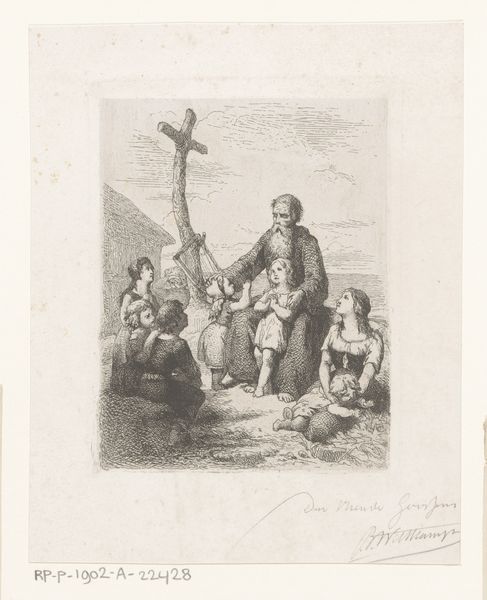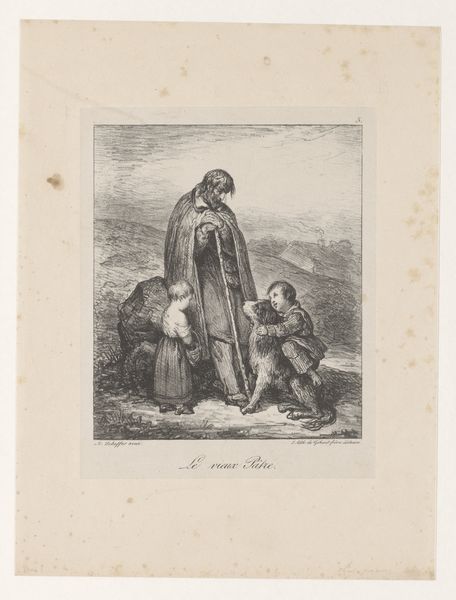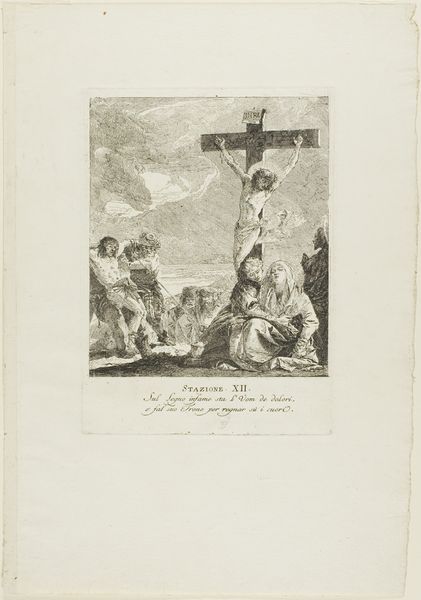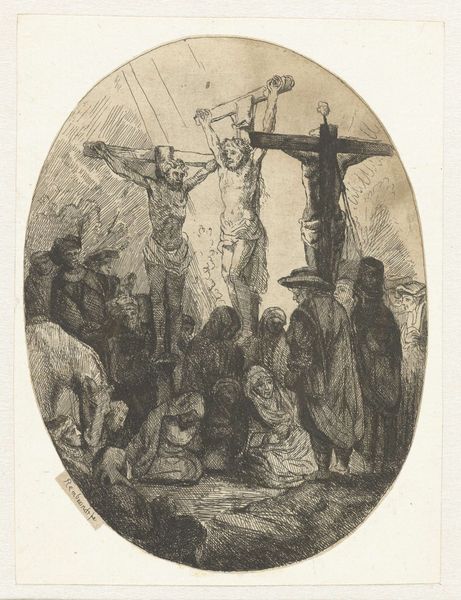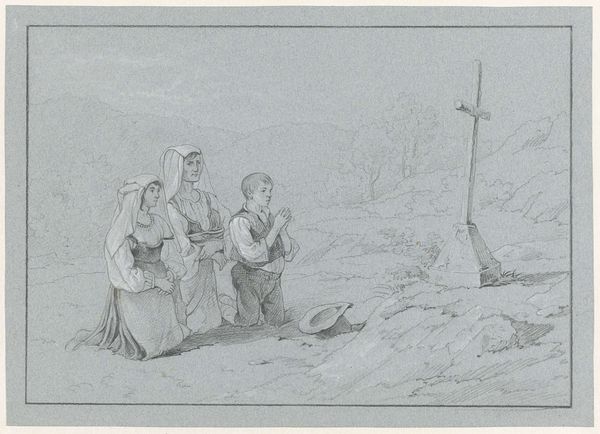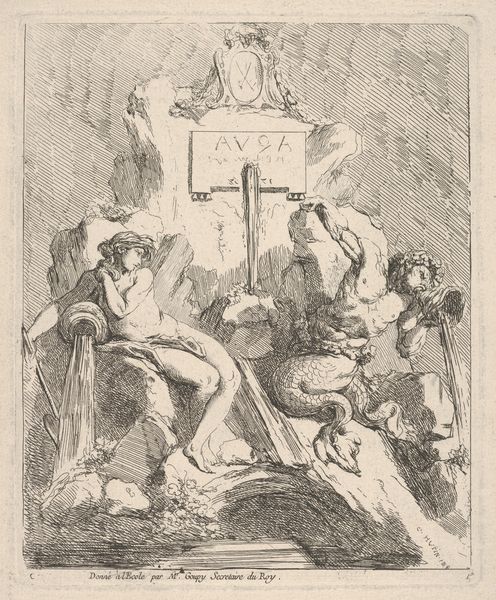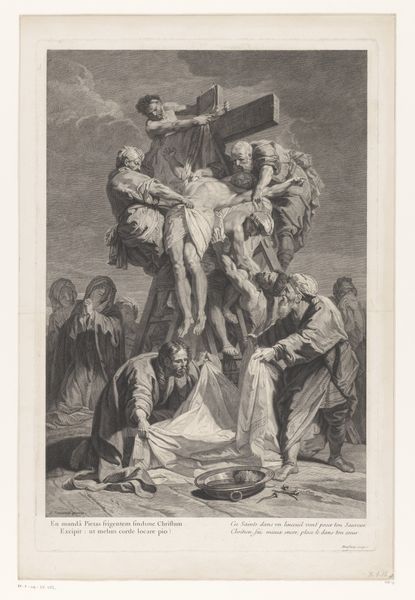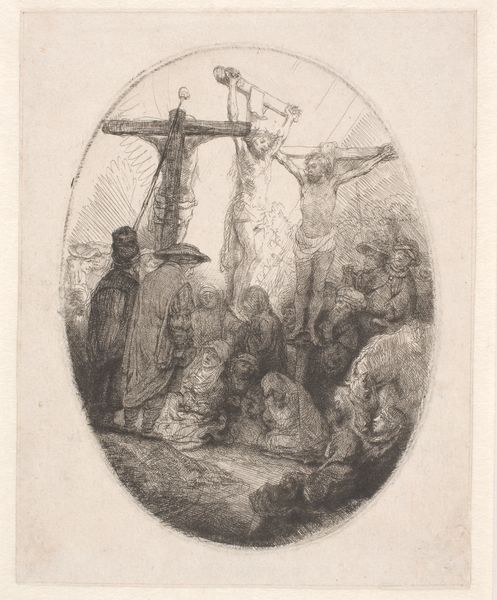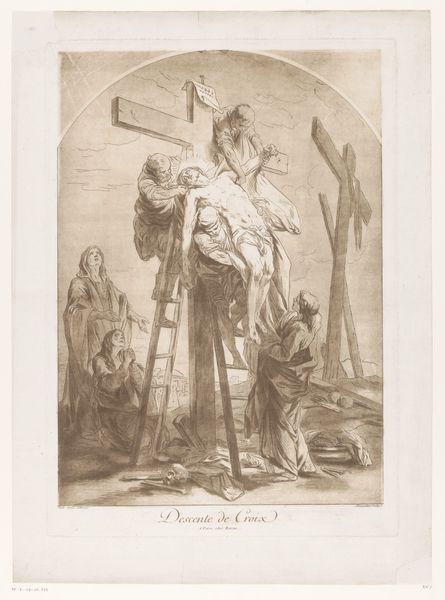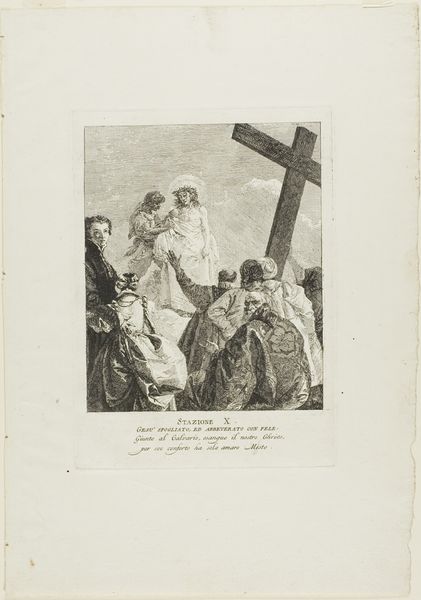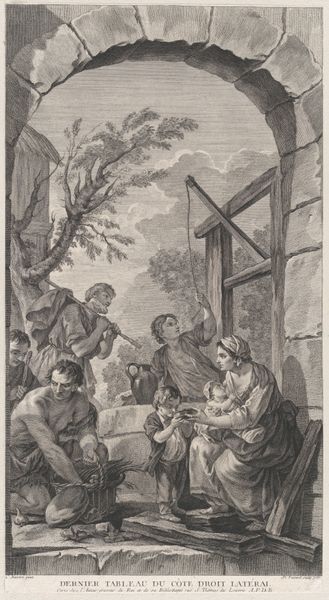
#
pencil drawn
#
light pencil work
#
pencil sketch
#
old engraving style
#
etching
#
ink drawing experimentation
#
pen-ink sketch
#
traditional art medium
#
pencil work
#
watercolour illustration
Dimensions: height 133 mm, width 103 mm
Copyright: Rijks Museum: Open Domain
Curator: This is a pencil sketch created in 1857 by Johan Bernhard Wittkamp entitled "Bruno sprekend tot een groep kinderen", or "Bruno speaking to a group of children." It has such an ethereal quality to it. Editor: Ethereal is a great word for it! The delicacy of the line work and the overall muted tones do create a dreamlike atmosphere. But beyond the aesthetics, what narrative is unfolding here? Curator: Wittkamp was working in a time of increased interest in Romantic ideals, and it’s likely this piece engages with concepts of moral education and the perceived innocence of children. Editor: Right, because I immediately keyed into how the dynamics seem charged. The gaze of some children on the adult male figure in the center feel overtly expectant. Do you think this could be an almost performative vision of piety, considering the makeshift cross propped behind them? Curator: I think so, the inclusion of that element and Bruno's central position definitely suggests the transmission of certain values. The landscape, the presence of that rudimentary cross... it points to specific religious instruction. It definitely casts Bruno in a position of authority. Editor: I notice how those messages might land differently depending on the children's identities, especially along the lines of gender. It begs questions of the specific cultural roles that were being prescribed and encouraged in 19th-century Netherlands, even subconsciously. Curator: Absolutely. These visual narratives often subtly enforced societal expectations of gender roles, moral behavior, and class structure. It highlights how the distribution of images is itself a system that socializes individuals. Editor: The sketch's ambiguity also interests me—it’s not overly sentimental, leaving space for critique about how childhood is shaped by outside forces and belief systems. There’s power in acknowledging the constructed nature of these images. Curator: I agree. Recognizing that it’s not a purely objective view but shaped by societal context offers opportunities to examine that historical lens more thoughtfully. Editor: A compelling reminder of the need to be critically aware when viewing the art of the past. Curator: Precisely, to unravel the layers of intent, ideology, and impact interwoven within each artwork.
Comments
No comments
Be the first to comment and join the conversation on the ultimate creative platform.
